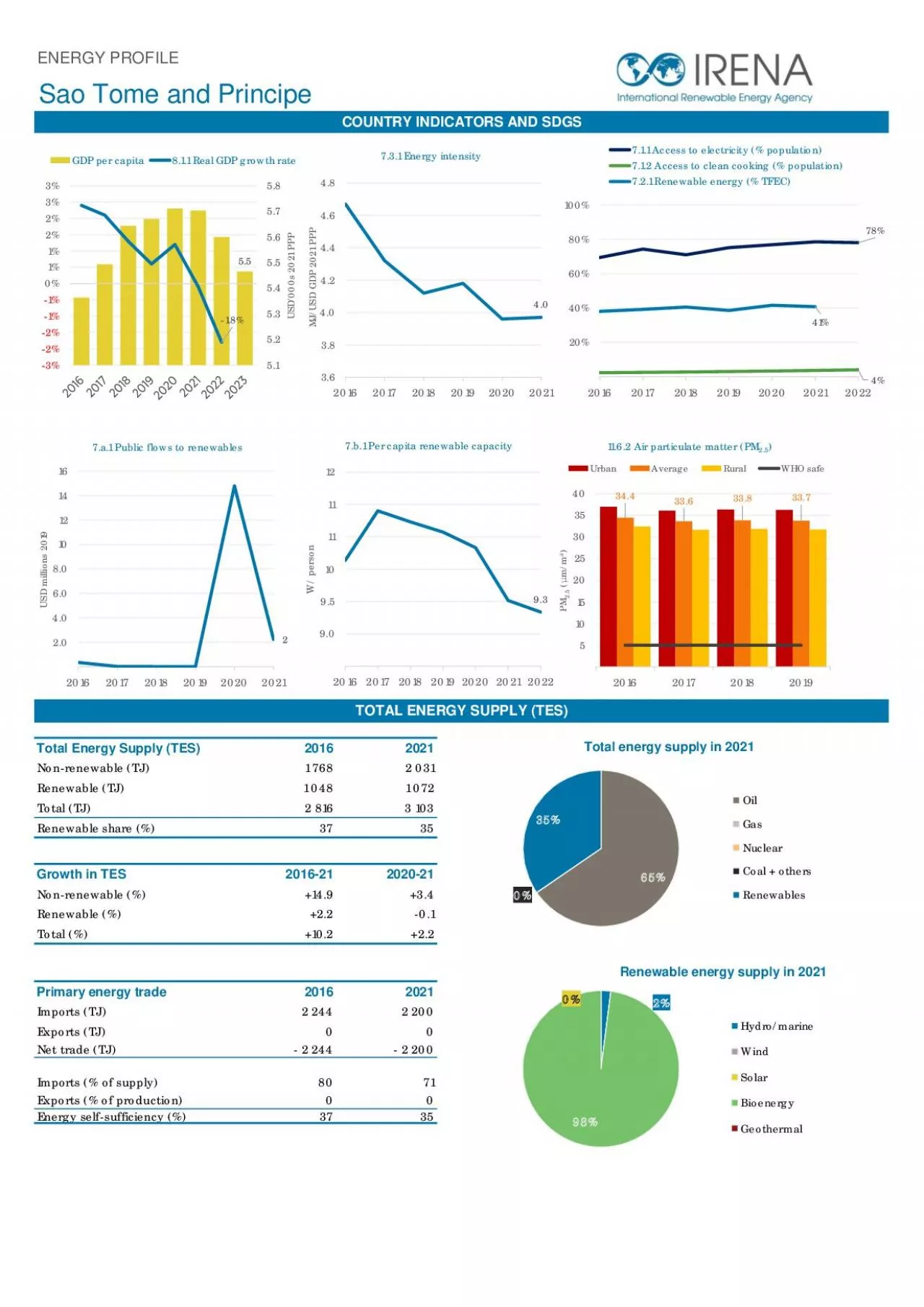PDF-ENERGY PROFILE
Author : harmony | Published Date : 2021-07-03
Renewable energy of TFEC 384 Access to electricity of population 725 Energy efficiency MJ per 1 of GDP 45 Access to clean cooking of population Public flows renewables
Presentation Embed Code
Download Presentation
Download Presentation The PPT/PDF document "ENERGY PROFILE" is the property of its rightful owner. Permission is granted to download and print the materials on this website for personal, non-commercial use only, and to display it on your personal computer provided you do not modify the materials and that you retain all copyright notices contained in the materials. By downloading content from our website, you accept the terms of this agreement.
ENERGY PROFILE: Transcript
Download Rules Of Document
"ENERGY PROFILE"The content belongs to its owner. You may download and print it for personal use, without modification, and keep all copyright notices. By downloading, you agree to these terms.
Related Documents














